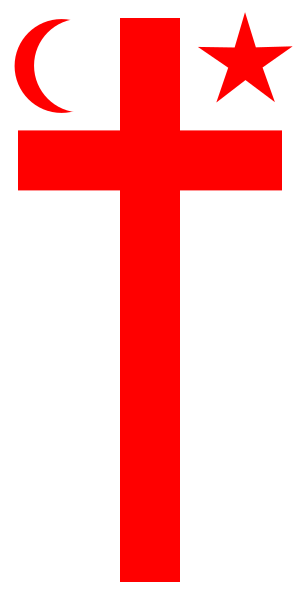Grand Council (Miꞌkmaq) facts for kids
The Grand Council (also called Santé Mawiómi or Mi'kmawey Mawio'mi) was the main traditional government for the Mi'kmaq people. They lived in what is now Canada. This system was in place until 1876, when the Indian Act required elected governments. After this law, the Grand Council focused more on spiritual matters.
The Grand Council included representatives from the seven Mi'kmaq districts. It also had "Keptinaq" (captains or district chiefs), elders, the "putús," a women's council, and the Grand Chief.
The putús were important record-keepers. They used stories and special wampum belts to record the Grand Council's meetings. These belts were like a visual history. The putús also helped with treaties between the Mi'kmaq and other groups.
Today, the hereditary chiefs of the traditional Grand Council still have a role. However, the legal power to govern has mostly moved to elected chiefs and councils because of the Indian Act.
Contents
How the Grand Council Began
The Grand Council was formed after France lost its power in America in 1761. Before this time, there was no strong central government for the Mi'kmaq. Sometimes, leaders from different Mi'kmaq groups would meet.
Each group had its own chief, called a saqamaw. These chiefs met as equals. Their meetings sometimes ended in agreement, but other times they did not. The Grand Council helped create a more organized way for all the Mi'kmaq to work together.
The Grand Chief's Role
The Grand Chief was a special leader chosen from one of the district chiefs. This chief usually came from the Mi'kmaq district of Unamáki, which is now Cape Breton Island. This important title was passed down through families, usually to the Grand Chief's oldest son.
The Grand Council met on a small island called Mniku. This island is in the Bras d'Or Lake on Cape Breton. Today, Mniku is part of a reserve called Chapel Island or Potlotek. Even now, the Grand Council still meets at Mniku to talk about important issues for the Mi'kmaq Nation.
District Councils and Their Leaders
The Mi'kmaq land was divided into seven traditional "districts." Each district had its own independent government and its own borders. Each district government had a chief, called a sagamaw, and a council.
The district council members included band chiefs, elders, and other respected community leaders. These councils were responsible for many important tasks. They made laws, handled justice, decided on fishing and hunting areas, and even made decisions about war and peace.
Mi'kmaq historian Daniel N. Paul explains that many Mi'kmaq individuals signed treaties. However, these signers only represented their own districts. According to Mi'kmaq custom, each district was independent. After signing an agreement, the district chief would bring it back to the Mi'kmaq Grand Council, the Council of Women, and then to all citizens. If everyone agreed, the treaty would be approved by each district.
Local Chiefs
The local chief was in charge of the village community. This chief led the "Council of Elders," which was the main governing group for the village. The Council of Elders was made up of family heads or their representatives.
Modern Band Councils
Today, there are about 35 Mi'kmaq reserves in Nova Scotia. These reserves are managed by thirteen First Nation Mi'kmaq communities, which were set up starting in 1958-59. Each community has its own leaders, known as the Band Council. This council includes an elected chief and several councilors.
The traditional Grand Council still exists. It sometimes makes rare decisions, such as asking SWN Resources to leave traditional Mi'kmaq lands.
According to Canadian law, the legal power to govern has largely been given to the elected Chiefs and Councils defined in the Indian Act. However, the Grand Council itself has never fully agreed to this transfer of power.
The Grand Council's Role Today
The exact powers and role of the Grand Council today are sometimes debated. However, it is clear that the "elected Chiefs and Councils" do not represent all people defined in the Indian Act. They also do not represent all the lands and waters mentioned in the treaties. The Grand Council claims authority over these areas.
Events in 2013 showed how these different claims of authority can cause disagreements. For example, the Supreme Court of Canada ruled in January 2013 that Métis and "non-status Indians" were considered "Indians" under the Act. However, these groups were not represented in the Indian Act's election system.
The Royal Commission on Aboriginal Peoples suggested that traditional governments, like the Grand Council, should be reformed. They believed these bodies could help connect reserves that are physically or socially separated.
Both the Royal Commission and the Supreme Court have said that the Grand Council should continue to have a role. This role could include cultural, social, environmental, or other matters that fit within treaty laws. The modern Grand Council also claims powers under the UN Declaration on the Rights of Indigenous Peoples, which Canada has signed. For instance, in the SWN case, the Grand Council stated it had clear authority over hydraulic fracturing (fracking) and other activities underground.
On October 17, 2013, there was a strong response by the RCMP to protesters against fracking near Rexton, New Brunswick. Most of these protesters were from the Elsipogtog First Nation and had support from other local councils in New Brunswick. This event further highlighted the disagreements over who has authority. Both Indigenous and non-Indigenous supporters referred to the Grand Council's authority. Some local district councils clearly chose to follow the Grand Council's authority over provincial and federal laws. They relied on the Grand Council's treaty rights and the UN Declaration to support their shared demand for a stop to fracking in New Brunswick.
Several international groups, including Christian Peacemaker Teams, also supported this position. The events in Rexton led to many sympathy protests across North America. This support strengthened the Grand Council's claim to have formal authority.
See also


